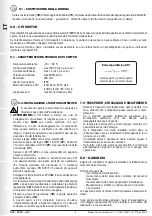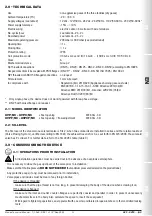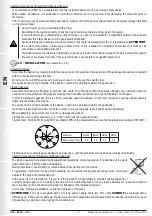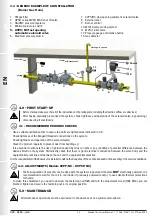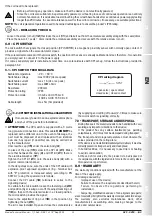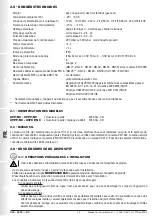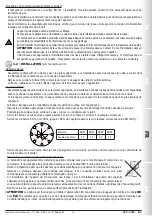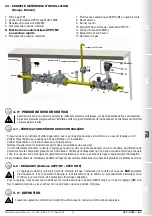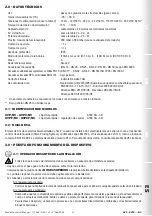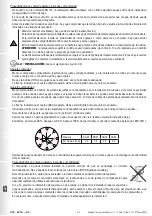
12
ES
FR
EN
IT
XVP - XVPC.../NC
Madas Technical Manual
- 1|1.2aX - REV. 1 of 10
th
Sep 2020
Common procedures (threaded and flanged devices):
• In accordance with EN 161 a suitable filter must be installed upstream of a gas closing safety device;
• With outdoor installation, it is advisable to provide a protective roof to prevent rain from damaging the electrical parts of
the device;
• Prior to carrying out any electrical wiring operations, make sure that the mains voltage matches the supply voltage indicated
on the product label;
• Cut out power prior to proceeding with wiring;
• According to the plant geometry, check the risk of explosive mixture arising inside the piping;
• If the solenoid valve is installed near other devices or as part of an assembly, compatibility between the solenoid
valve and this other device must be evaluated beforehand;
• Avoid installing the solenoid valve near surfaces that could be damaged by the coil temperature.
ATTENTION
:
the surface temperature could cause contact burns. If it is installed in a domestic environment, it must not be
accessible to unqualified personnel;
• The solenoid valve is suitable for installation in places at low risk of mechanical impact. Provide a protection against
impacts or accidental contacts if the solenoid valve is accessible to unqualified personnel.
3.2 - INSTALLATION
(see example in 3.4)
Threaded devices:
• Assemble the device by screwing it, with the due seals, onto the plant with pipes and/or fittings whose threads are consistent
with the connection being attached;
• Do not use the coil (
11
) as a lever to help you screw it on, only use the specific tool;
• The arrow, shown on the body (
4
) of the device, needs to be pointing towards the application;
Flanged devices:
• Assemble the device by flanging it, with the due seals, onto the plant with pipes whose flanges are consistent with the
connection being attached. The gaskets must be free from defects and must be centred between the flanges;
• If, after installing the gaskets, there is still an excessive space in between, do not try to reduce the said gap by excessively
tightening the bolts of the device;
• The arrow, shown on the body (
4
) of the device, needs to be pointing towards the application;
• Insert the relative washers inside the bolts in order to prevent damage to the flanges during tightening;
• When tightening, be careful not to “pinch” or damage the gasket;
• Tighten the nuts or bolts gradually, in a “cross” order (see the example below);
• Tighten them, first by 30%, then by 60%, and finally 100% of the maximum torque (see the table below according to EN 13611);
Diameter
DN 25 DN 32 DN 40 DN 50
Max. torque (N.m)
30
50
50
50
• Tighten each nut and bolt again clockwise at least once, until the maximum torque has been achieved uniformly;
• Common procedures (threaded and flanged devices):
• The device can also be installed vertically without prejudicing correct operation. It cannot be put in upside
down (with the coil (
11
) pointing downwards);
• During installation, avoid debris or metal residues from getting into the device;
• To guarantee mechanical tension-free assembly, we recommend using compensating joints, which also
adjust to the pipe’s thermal expansion;
• If the device is to be installed in a ramp, it is the installer’s responsibility to provide suitable supports or
correctly sized supports, to properly hold and secure the assembly. Never, for any reason whatsoever, leave the weight of
the ramp only on the connections (threaded or flanged) of the individual devices;
• In any case, following installation, check the tightness of the plant;
• ATTENTION:
The coil is provided with a 3m long power supply cable (
1
). This cable
CANNOT
be replaced with a
different one. In the event of damage, the part (coil) must be disposed of and replaced with an identical new one; Any repair
(if possible) can only be carried out by the manufacturer;








